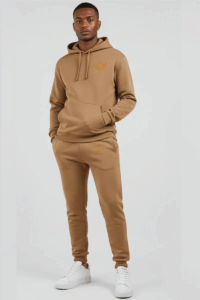A streamlined wardrobe built around essentials can be an incredibly efficient and sustainable way to maintain a stylish, functional closet. However, even with a Essentials Clothing carefully curated collection of essential clothing, it’s important to reassess and rotate your outfits regularly. Doing so helps keep your wardrobe fresh, prevents clothing from being neglected, and ensures you’re getting the most use out of your pieces.
Regularly reassessing your wardrobe is a simple but effective habit to maintain, ensuring that you feel satisfied with your clothes and continue to wear everything you own. Here’s why and how you should incorporate reassessing and rotating your outfits into your wardrobe routine.
Why You Should Reassess and Rotate Your Outfits Regularly
1. Prevent Outfit Fatigue
Even if your wardrobe is filled with timeless and versatile essentials, wearing the same outfits over and over can lead to boredom. Reassessing your wardrobe allows you to identify overlooked pieces or combinations, giving your outfits a fresh perspective. By rotating your outfits, you ensure that no piece gets forgotten and that you stay excited about your wardrobe.
2. Make the Most of Your Essential Pieces
Essential clothing is designed to be versatile, allowing you to mix and match items with ease. However, without rotating your outfits regularly, you may unknowingly neglect some of your pieces. Regular reassessment helps you remember all the options you have, ensuring you’re wearing every item in your wardrobe and not just relying on a select few.
3. Adjust to Changing Seasons or Trends
Fashion trends and seasons naturally change over time, and your wardrobe should reflect that. By regularly reassessing your clothing, you can rotate out items that are seasonally appropriate and adjust your outfits to fit the current weather. You can also swap out or refresh pieces to keep your look current, without needing to buy new clothes.
4. Avoid Overbuying and Clutter
Reassessing your outfits regularly helps you spot gaps in your wardrobe and ensures you only invest in what you truly need. It prevents you from impulse shopping for pieces that don’t align with your essentials or aren’t as versatile as they appear. This helps keep your closet clutter-free while ensuring you maintain a wardrobe full of functional items.
How to Reassess and Rotate Your Outfits
1. Conduct a Wardrobe Check
Start by taking a detailed inventory of your wardrobe. Lay out all the pieces you have, including t-shirts, sweaters, jeans, hoodies, jackets, and shoes. Examine each piece for the following:
- Condition: Check for any damage, wear and tear, or clothing that no longer fits.
- Seasonal Relevance: Identify pieces that are best suited for a particular season and swap them accordingly.
- Current Usage: Take note of what you wear frequently and what has been neglected over time. Make sure your wardrobe reflects your current lifestyle and preferences.
2. Identify Gaps and Replace Underused Pieces
Sometimes, the reason certain clothing items go unnoticed is because they don’t match with anything else in your wardrobe, or they are out of season. Reassessing your outfits allows you to identify pieces you aren’t wearing and determine whether you need to replace them or integrate them better into your rotation.
- Evaluate Versatility: Does a particular piece work well with other items in your wardrobe? If not, consider swapping it for something that’s easier to mix and match.
- Replace Underused Items: If you have essentials that no longer fit your style or are rarely worn, think about replacing them with pieces you’ll actually get use out of. For instance, you might need a more versatile pair of jeans or a better-fitting hoodie.
3. Rotate Your Essentials for New Outfit Combinations
Once you’ve assessed your wardrobe, start rotating the pieces you’ve neglected or haven’t worn in a while. The key to this process is mixing up your outfits to create new looks using the same essential pieces. Here are some strategies:
- Reimagine Layering: Layer different essentials in new ways. A hoodie that you typically wear with jeans could also look great under a jacket for a more polished, smart-casual vibe.
- Swap Out Shoes: Pair different shoes with the same outfit to give it a completely different feel. Sneakers can be swapped for loafers, boots, or casual shoes depending on your mood.
- Change Accessories: Sometimes, the simplest change, like switching from a cap to a scarf, can entirely transform an outfit. Accessories like belts, hats, and watches can give essential pieces a fresh look.
- Try Different Color Combinations: If you usually wear a lot of neutrals, don’t be afraid to experiment with new color combinations, like mixing a neutral sweater with colored chinos or pairing a black hoodie with light-wash denim.
4. Set a Rotation Schedule
A great way to make sure you rotate your outfits regularly is to set a schedule for reassessment. For example, every season, take a weekend to go through your wardrobe, set aside clothes that no longer fit, and create new outfit combinations. You could also set a monthly reminder to review your closet and make sure you’re getting good use out of all your essential clothing pieces.
5. Stay Flexible with Seasonal Changes
As the weather changes, rotate your clothing to match the season. In colder months, swap in your heavier sweaters and jackets, while in warmer weather, lighter options like t-shirts and hoodies will become more practical. Pay attention to upcoming weather forecasts so you can plan for the changing season and ensure you’re dressing comfortably and stylishly.
For example:
- Spring/Summer: Rotate in lightweight fabrics like cotton t-shirts, breathable sweaters, and comfortable shorts or lightweight chinos.
- Fall/Winter: Bring out thicker sweaters, denim jackets, and cozy hoodies. Also, swap in boots or warmer sneakers for the cooler months.
6. Track Your Favorite Combinations
Take note of the outfit combinations that you enjoy the most. These can be your go-to options that make getting dressed easier. You can even photograph your outfits so you can easily reference them when planning your wardrobe for the week. This will help you maximize your essential pieces and avoid wearing the same outfits too frequently.
Tips for Reassessing and Rotating Your Outfits
- Create Outfit Templates: Write down simple outfit formulas that work well for you, such as “black hoodie + gray jeans + sneakers.” This helps you mix and match pieces without overthinking it.
- Invest in Timeless Essentials: Regularly rotating outfits is much easier when your wardrobe is built on timeless, high-quality pieces. These essentials won’t go out of style and can be worn year after year.
- Mix Seasonal with Year-Round Pieces: Don’t tuck away all your essentials when the seasons change. Instead, think of ways to incorporate year-round pieces (like your favorite hoodie) into your seasonal outfits.
Conclusion
Reassessing and rotating your outfits regularly is an important habit that helps you make the most of your essential clothing. By taking stock of what you own, mixing up combinations, and adjusting for seasonal changes, you can breathe new life into your wardrobe and keep your outfits fresh and interesting. This simple practice reduces wardrobe fatigue, ensures you’re wearing everything you own, and makes dressing each day a more enjoyable experience.






